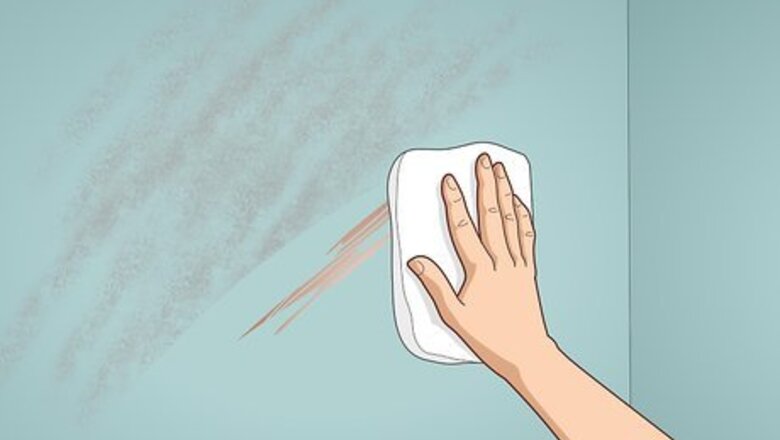
views
Wiping Down the Wall
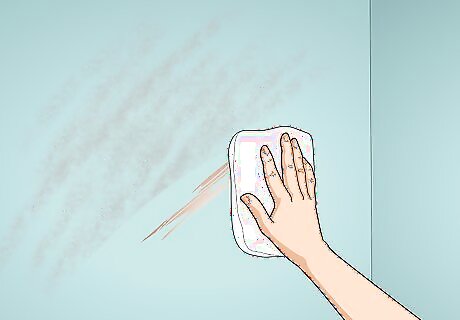
Use a clean, dry rag to remove the initial layer of dirt and dust. Wipe down your wall starting from the top and working your way to the bottom to get rid of any excess dust. If you can’t reach the top of your wall, consider using an extendable duster that can reach any high spots for you.

Remove light markings from the wall using a damp rag. Dampen a soft, clean rag or towel with warm water and begin wiping down any areas with light marks. Avoid scrubbing too hard and move the towel in circular motions. It’s a good idea to wipe down your entire wall with a damp rag if you’re planning on repainting the whole thing. It’s also okay to use a non-abrasive sponge instead of a rag or towel, if you’d like. If you’re worried about the water damaging your wall, you can skip this step.
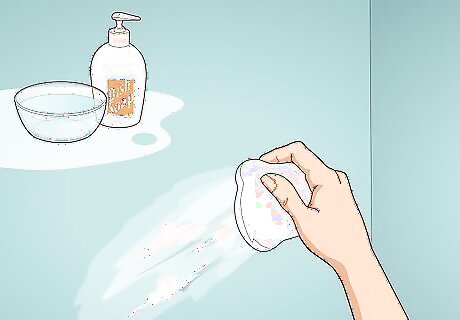
Mix water and dish soap together to use on scuff marks. Squeeze a few drops of dish soap into a cup of water and mix it together with your finger or a spoon. Dip a clean, soft towel or sponge into the water and gently rub or dab at the scuff marks to remove them. Wipe down the spot with a clean, damp rag to get rid of any extra soap.
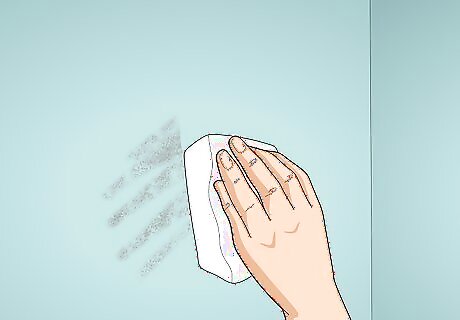
Wipe down specific spots using a magic eraser to remove trickier marks. Before you try to cover up dirt marks, try using a magic eraser because they’re great at removing almost anything. Purchase a magic eraser designed for walls or appliances at your local big box store, dampen it with water, and gently scrub the mark to see if it comes off. Squeeze out your magic eraser before using it to get rid of any excess water.

Let the wall dry completely before applying anything to it. If you’re spackling, priming, or painting your wall, wait at least an hour for it to dry completely before starting. This will ensure that your next step works properly.
Spackling over Scratches and Holes
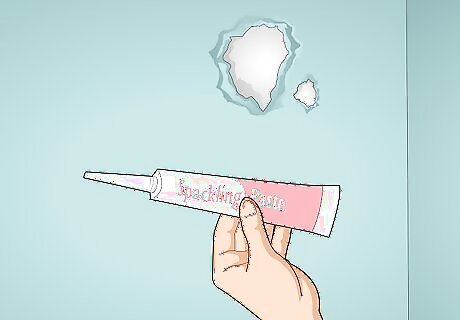
Purchase a spackling paste to cover indentations in the wall. Spackling paste often comes in a tube so you can squirt it out easily and can be found at your local big box or home improvement store. Pick out a spackling paste that works with your specific type of wall, and don’t worry too much about its color—you’ll paint over it once it’s dry.
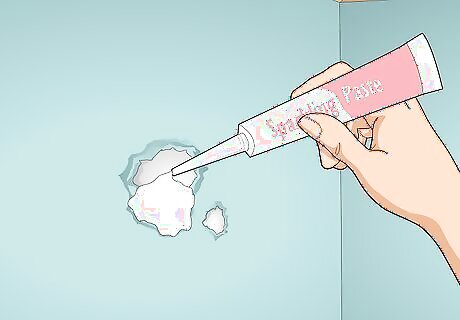
Squeeze out a dollop of the paste into each scratch or hole. Cover each scratch or hole with the paste, applying the paste so there’s definitely enough spackle to fill them in. Don’t worry if you squeeze out too much of the spackle because you can wipe off any excess later. Read the instructions on the spackling paste so you know the best way to apply it.
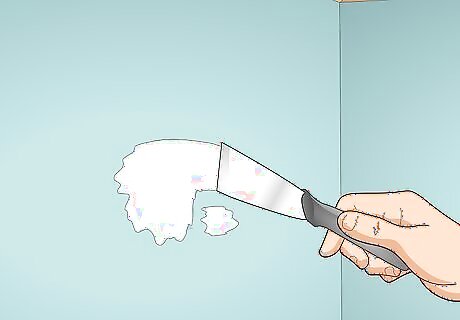
Use a putty knife to spread the paste into the wall smoothly. Move the end of the putty knife over the indentation, using the flat edge to create an even layer. Go over the spackling paste with the putty knife in several different directions to be sure it’s as smooth as possible. Look for a putty knife at your local big box or home improvement store.
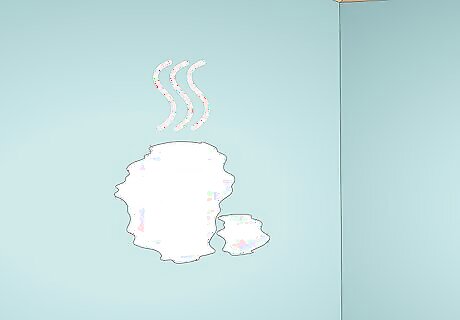
Let the paste dry completely according to the instructions. The directions that come with your spackling paste will tell you how long to wait for it to dry, but most take between 1 and 2 hours. It’s best to wait an additional hour or so before doing anything else to the spackle spots, like sanding or painting. Set a timer for 2-3 hours so you don’t forget when it’s time to move to the next step.
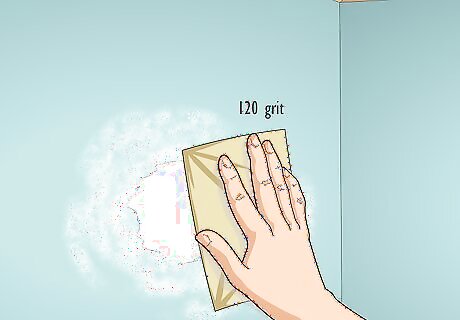
Sand each mark using 120-grit sandpaper to create an even surface. Move the sandpaper over the dried, spackled spot using circular motions to sand off any harsh edges from the spackling job. Do this to every spot that you covered up until the area is smooth to the touch. If your wall is very textured, you don’t need to worry about sanding it. Wipe away any dust from sanding using a clean rag after you’re finished. If you have some leftover paint from when the walls were originally painted, you can then paint over the sanded mark.
Priming Stains on Walls
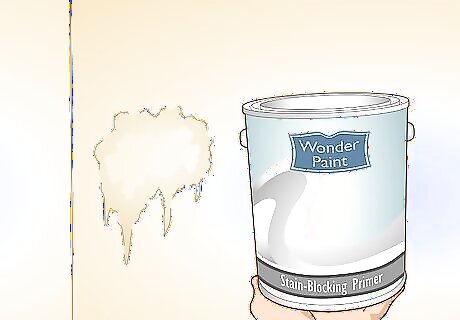
Pick out a stain-blocking primer to cover up any stains on your walls. If you have stains on your walls from things like water, these stains often leak through normal primer and paint. To keep your stain hidden from view, look for a primer labeled as “stain-blocking” to be sure it’ll cover up the stain thoroughly. For example, you might visit your local home improvement store and look for a shellac-based stain-blocking primer.
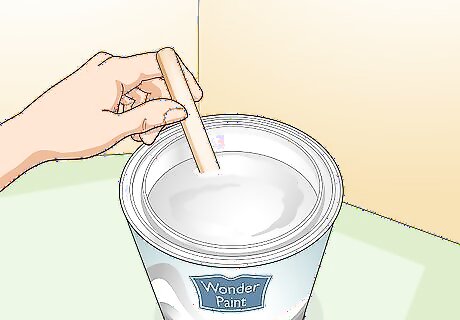
Mix the primer thoroughly using a mixing stick before using it. Either pry open the can of primer and stir it using a stick or other tool, or shake the can of primer thoroughly before opening it. This ensures your primer is well combined and will work properly when you apply it to the wall. Mixing sticks can be found at your local home improvement store when you pick up the primer.
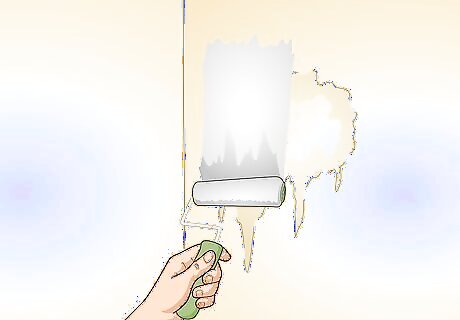
Apply the primer to the wall using a roller or paint brush. While it’s possible to only apply the stain-blocking primer to the stain, it’s a good idea to apply it to the entire wall to add additional protection and create a cohesive look. Roll the primer over the stain and rest of the wall using a handheld roller to cover a large area faster. If you’re only priming a small area, it’s okay to use a paint brush instead. Pour the primer into a tray if you’re rolling it onto the walls using a roller to make the process easier. Apply the primer in a thin, even layer, overlapping your strokes as you paint to ensure it’s all covered.

Let the primer dry before deciding if you need additional coats. It’s best to use 2 coats of primer to be sure it works its best. Wait for the primer to dry completely after you’ve applied a coat and see if the stain shows through. If it does, apply 1-2 more coats of the primer to hide it from view. Read your can of primer to see how long it takes to dry.
Painting over the Marks
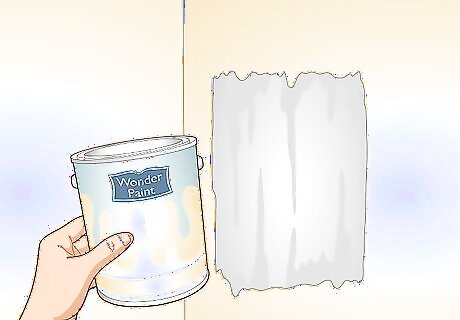
Use paint from the original can to do touch-ups, if possible. If you still have the original paint can that was used to paint your walls you're trying to fix, it’s best to use this same paint to paint over any marks. This will ensure that the paint is an exact match and saves you money. Mix this paint thoroughly before using it using a mixing stick or other tool because old paint tends to settle.
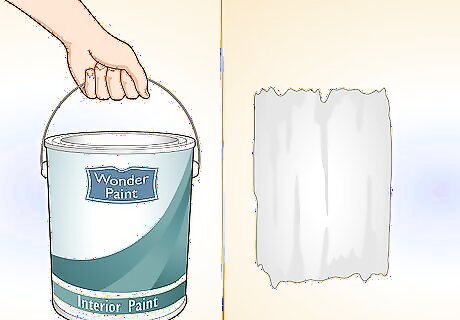
Choose a top coat in your desired color if you’re painting the entire wall. If you’re painting the whole wall, even if it’s in the same color, it’s best to purchase new paint to ensure you have enough to cover the entire area. Visit your local home improvement store and pick out an interior paint in the color and sheen that you’d like. Buy enough paint to cover your entire wall so you don't have to come back for more. For example, you might pick out an eggshell sheen for a slightly shiny finish, or a matte sheen for a super low luster finish. If you're not sure how much paint you need, ask an employee at the store for help.
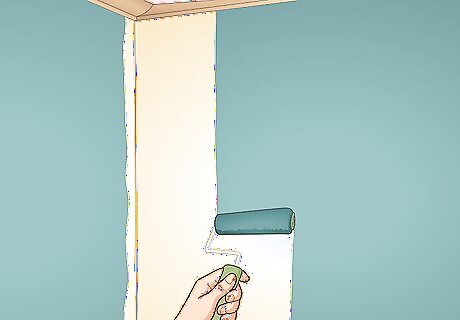
Roll the paint onto the wall using a roller if you're painting the whole wall. Mix your can of paint and pour some out into a paint tray. Dip your roller into the paint tray and move it back and forth to get paint on every side. Apply the paint to the walls using vertical movements of the roller, overlapping each stroke to be sure the wall is well covered. Look for a paint roller at your local home improvement or paint store. It's also okay to use a large paint brush, but this will take longer.
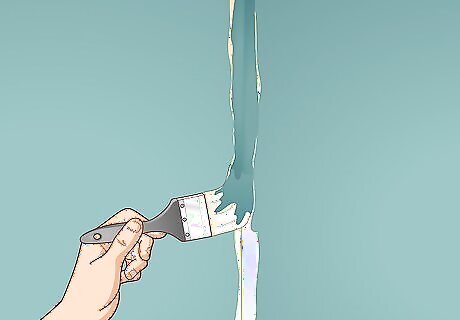
Dab the paint on with a paint brush if you’re doing a touch-up. For smaller areas, it’s easiest to dip a medium-sized paintbrush into your paint and dab it onto the wall gently. Swipe your brush against the inside of the paint can to remove excess paint before applying it to the wall. Dab the paint on right overtop the spot you’re hoping to cover up until you can't see the spot anymore. If the marked spot is especially small, use a small paint brush to avoid applying more paint than you need.
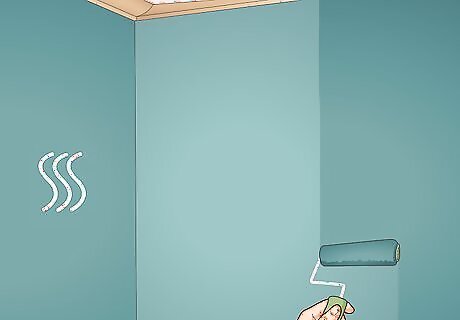
Wait for the paint to dry completely before adding additional coats. Whether you dabbed paint onto a small spot or rolled your paint onto the entire wall, wait several hours for the paint to dry completely before deciding if it needs a second coat. Touch-ups won't take as long to dry as painting the entire wall will. Your paint can will likely tell you how long your specific type of paint takes to dry.




















Comments
0 comment